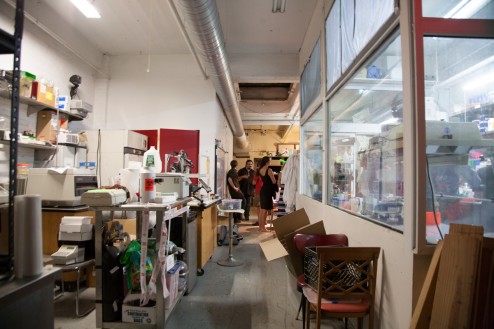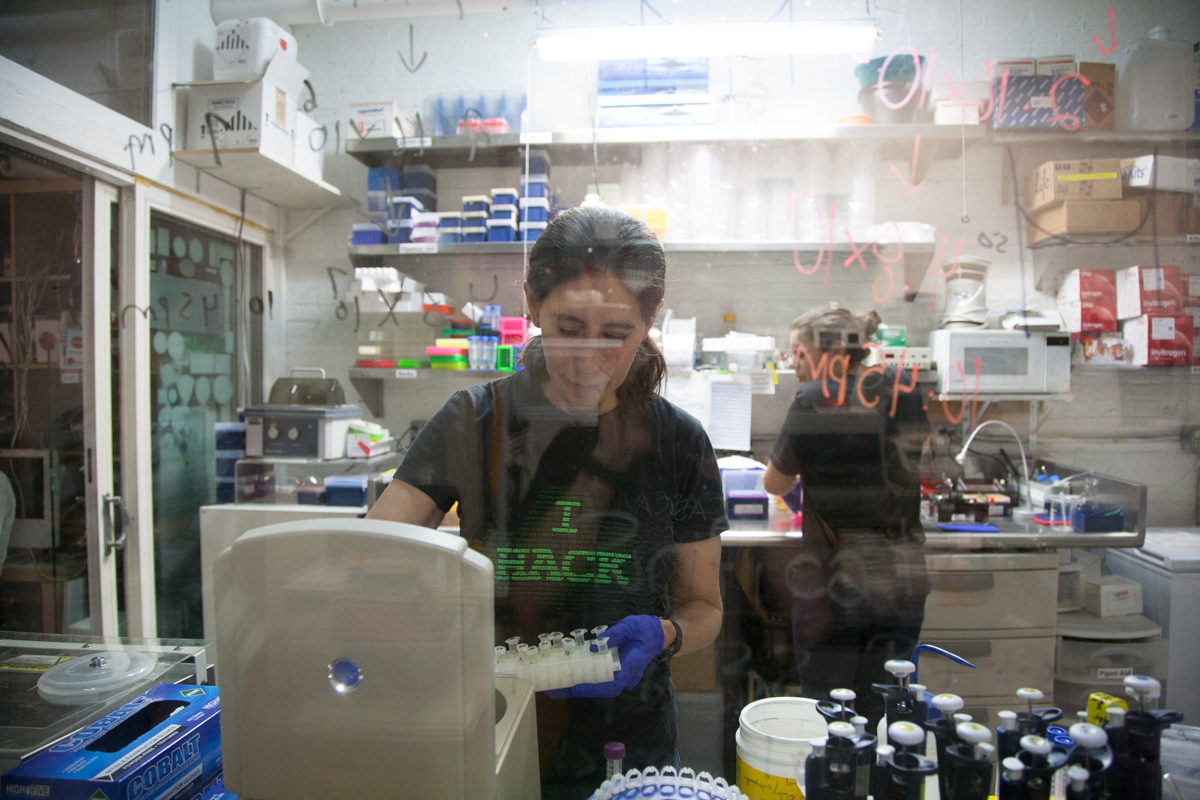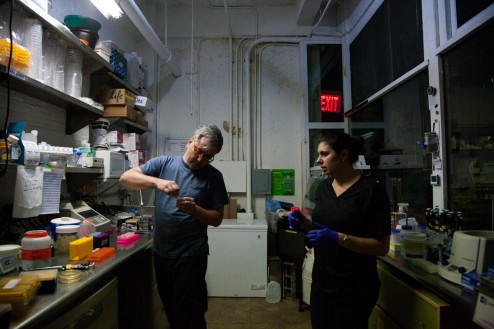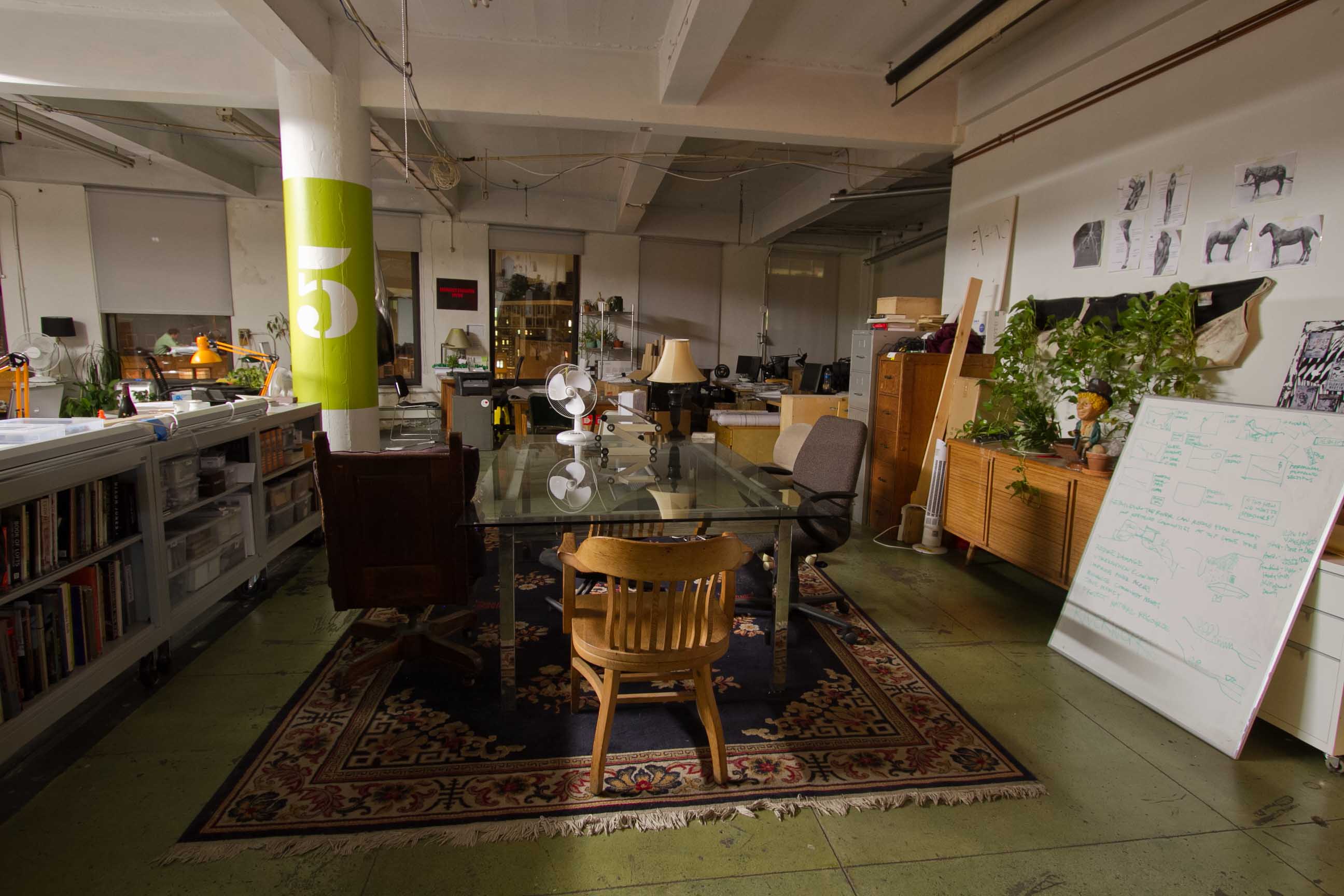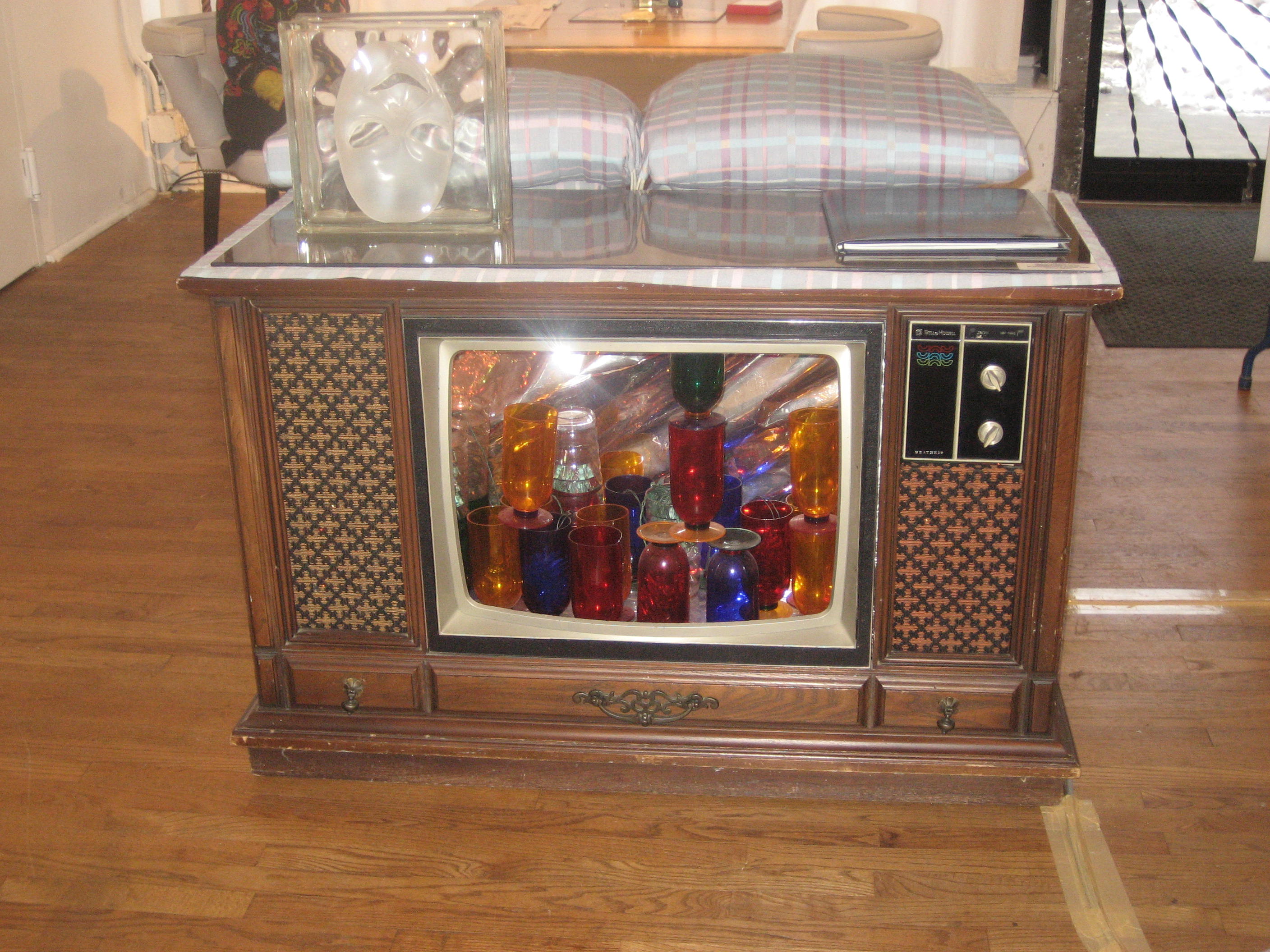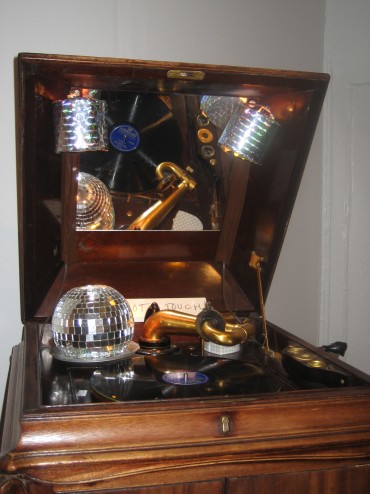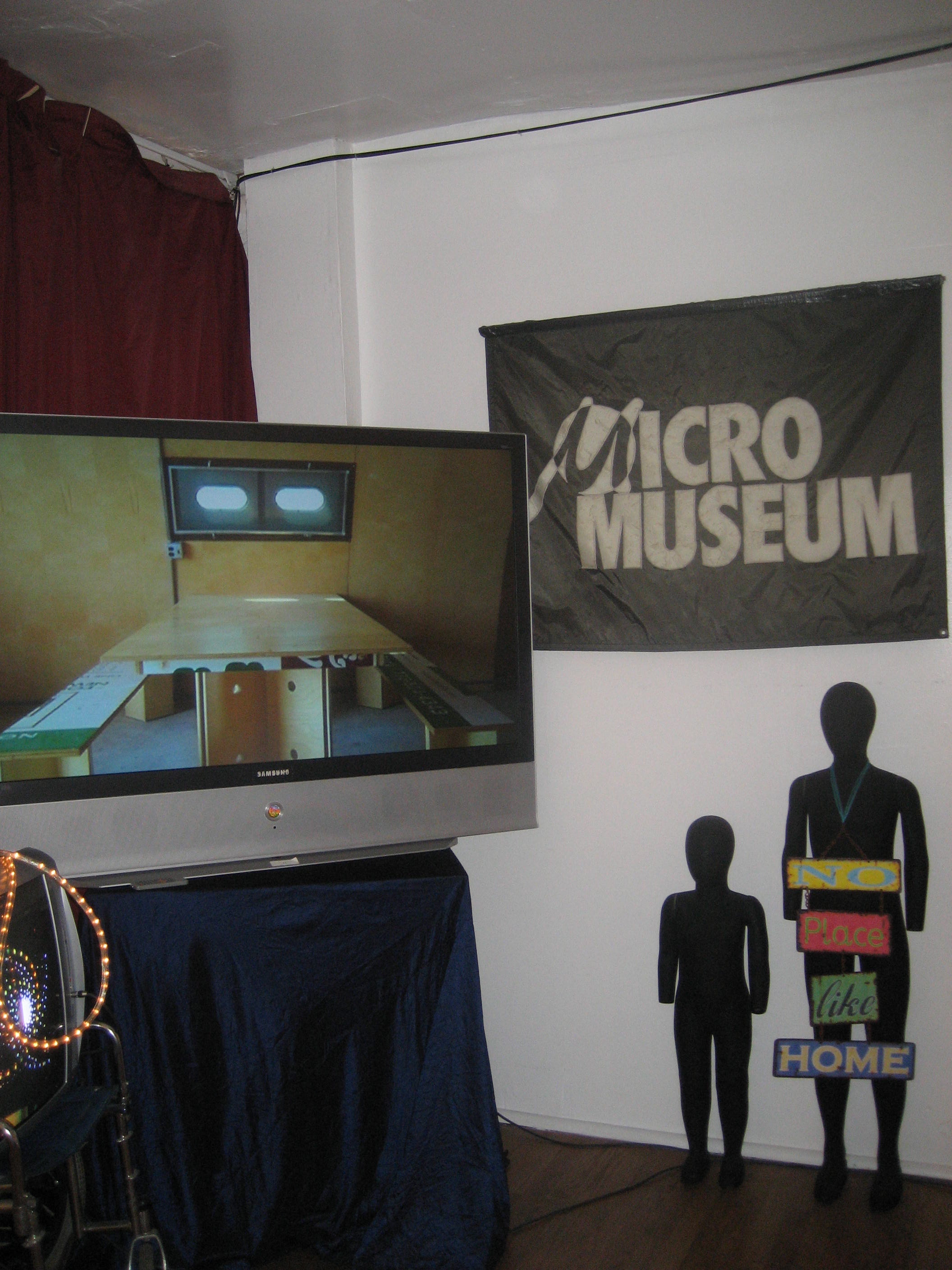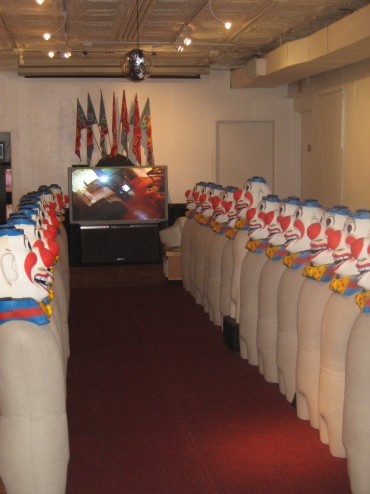neighborhood: downtown brooklyn | space type: music coworking | open since: 2010 | links: website, facebook, twitter
Founded by husband-and-wife composers Lainie and Jascha, Exapno is a coworking space for the musically minded. For a very low monthly fee, musicians (primarily “new music” composers) can rent desk space, giving them a quiet place to work on their music, network with other musicians, and give and attend performances. It’s built on the concept of a writers’ space, inspired by Paragraph in Manhattan, where Jascha was once a member.
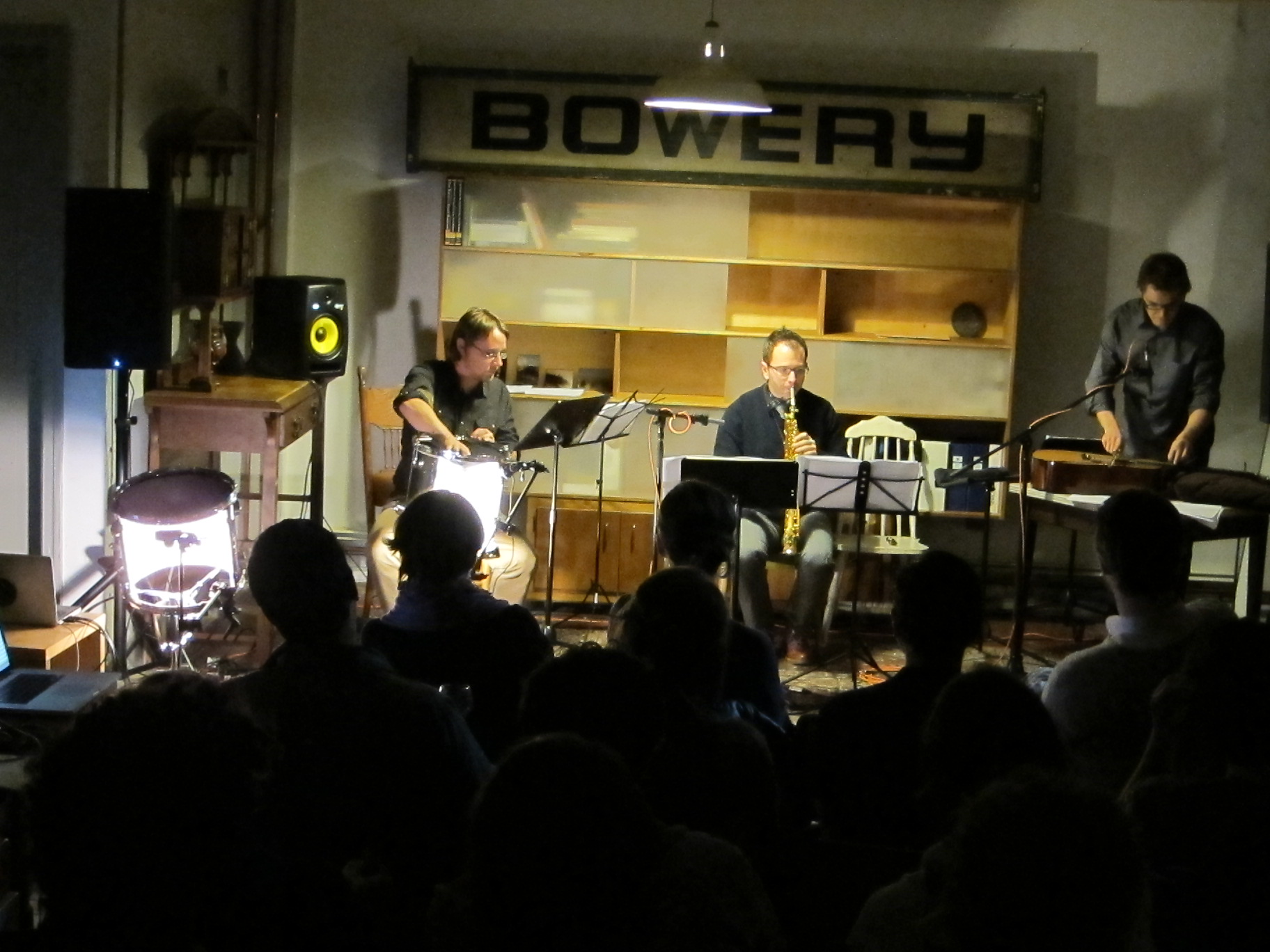
Qubit performing; photo by Lainie
Interestingly, Exapno is just one of myriad small businesses currently residing in the fascinating Metropolitan Exchange building. The massive MEx—a 45k-square-foot, seven-floor former bank—is owned by designer Al Attara, who is striving to make it a creative startup hive. Attara has owned the building for more than three decades, but for years it was on the city’s “urban renewal” chopping block, meaning that it could be reclaimed and torn down at any time. About six years ago the building came off the list, and since then Attara has invited in a wide universe of creatives, from avant-garde furniture designers RockPaperRobot to bio research lab Genspace. The sixth floor is all architects; the fifth floor has several food importers, from chocolate to tea to fish; and the fourth floor is media-oriented, with groups like Seed Magazine and Good News Planet, a website that only prints good news. (To read more about MEx, check out this New York Times piece from back in 2011.)
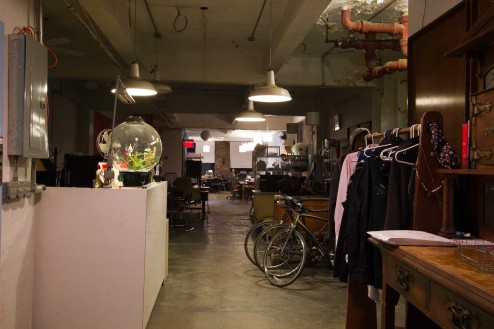
MEx fifth floor, photo by Maximus Comissar
Working within this amazingly diverse community of creative entrepreneurs, Exapno is thriving—as much as it can. With a cap of around 20 musicians monthly, and restrictions such as the inability to leave instruments overnight or to put up walls or soundproofing, Exapno may have reached its growth capacity. Ultimately they may relocate to a space where they can have more control and freedom, but in the meantime they’re happily staying put. Exapno, a 501(c)3 nonprofit, is always seeking donations, and the group is open to new members—find out more on their site. But first, read my Q&A with cofounder Jascha and musician member James.
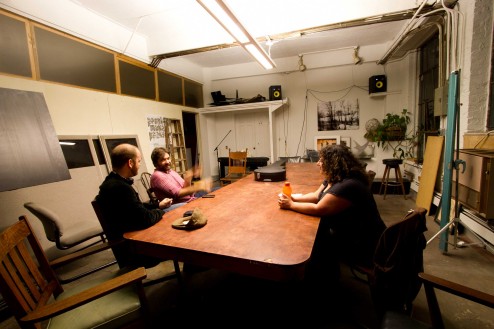
Jascha & James on left, photo by Maximus Comissar
brooklyn spaces: What does Exapno mean?
Jascha: My wife Lainie is a huge Marx Brothers fan, Harpo in particular. In his biography, Harpo talks about how when he toured Russia in the ’30s, he would see posters advertising his show, with his name written in Cyrillic, and it looked like “Exapno Mapcase.” I think we’ve only ever run into one other person who got the reference.
brooklyn spaces: How did the space get started?
Jascha: Since at least the early 2000s, Lainie had been wanting to create a performance space that was cheap to rent out, and that could function as a community nexus, a meeting place for young musicians, a way to get into the scene. Eventually we met Al, the wonderful man who owns this building. He’s incredible; instead of turning this place into condos or office space and making millions of dollars, he has filled this sort of ramshackle building with startups and indie businesses and nonprofits, just because that’s what he believes in. Anyway, Al agreed to rent us the space for whatever we could pay, so it’s sort of by his good graces that we’re here at all.
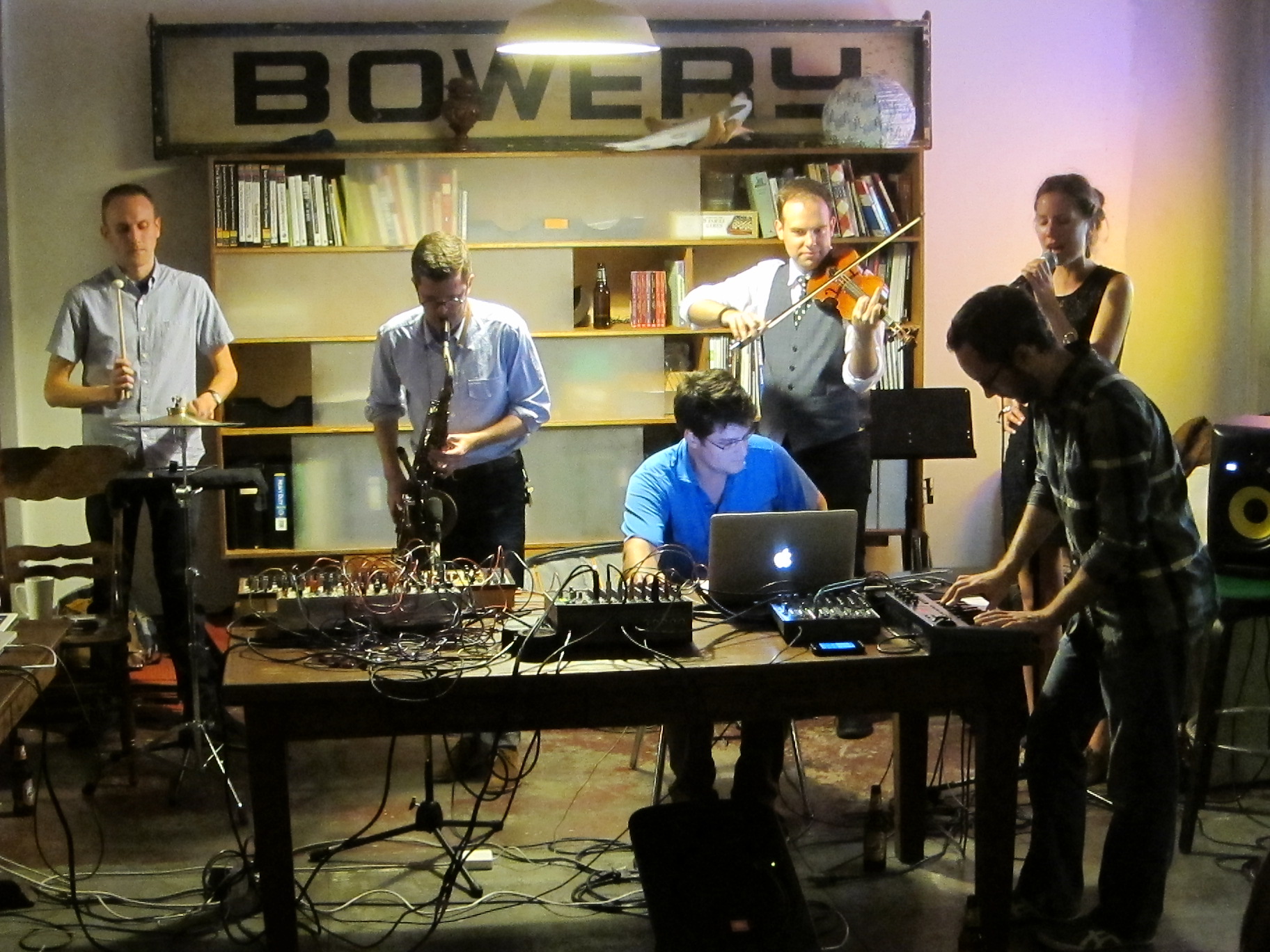
Wet Ink, photo by Lainie
brooklyn spaces: What’s it like being a member here?
James: It’s an amazing resource and access to a great community. All musicians needs space where they can make noise or quietly write music that will one day become noise, and it’s awesome to be able to get that for such a low monthly fee.
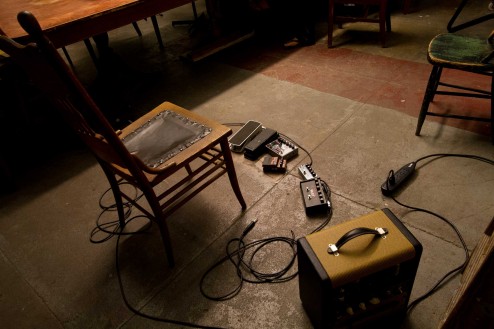
photo by Maximus Comissar
brooklyn spaces: What connects all the members? Does everyone write or make a similar kind of music?
Jascha: We rapidly discovered that with a really cheap rehearsal space, we had to find artful ways to deflect requests from garage bands or that sort of thing. That’s what’s nice about “new music”: occasionally it’s a little loud, but usually it’s like a string quartet, or a vibraphone and singer. It’s much more manageable in terms of neighbors.
James: It’s somewhat self-selecting. You can’t leave equipment here, you can’t make a lot of loud noise, so that disqualifies, say, a punk band that wants someplace to rehearse every night. Plus almost everyone I know in the “new music” community tends to be project-oriented, as opposed to in a definitive group. Which is why a resource like this is so important: we don’t have a whole band where each member can pitch in $20 a month for a space.
Jascha: There are a lot of things about music and musicians that are really quite antisocial—making lots of strange noise, leaving stuff everywhere, taking up lots of space with pianos and drum kits—so we’ve had to modify things. There’s a lot more we could be doing if we had a space we could control, but then we’d have to pay an awful lot of money. And actually, it feels like the people who mainly used the space two or three years ago are starting to move on to other things. Now I feel like the people who need the space are people we don’t know, so we need to work on getting the word out.
James: I’ve noticed a lot of new younger composers here. Suddenly there’s this new generation of really positive, spirited people doing all sorts of weird stuff, and a lot of it’s happening here.
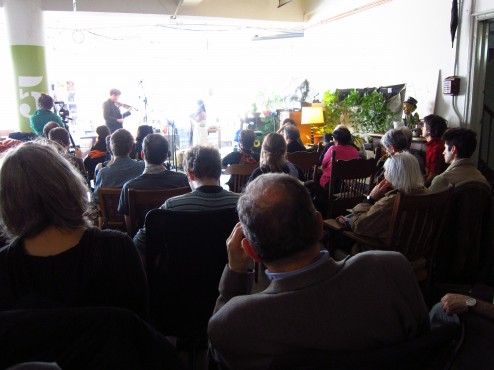
String Noise, photo by Lainie
brooklyn spaces: Do you have any famous alumni?
Jascha: Within the modest world of the New York new music scene, sure. Dither is quite well known; they’ve been around for years and get props from major composers. They do an event every year called the Dither Extravaganza [this year’s is on October 26th, at the Gowanus Loft]. Our artistic advisory board also has some heavy hitters in it, like Morton Subotnick and Paul Lanksy.
brooklyn spaces: What’s your relationship to the neighborhood?
Jascha: The location is awesome, it’s a great hub for music. Brooklyn Academy of Music has been here forever, and recently two major venues moved in around the corner: Roulette and ISSUE Project Room. But we’re proud to say we beat them here.
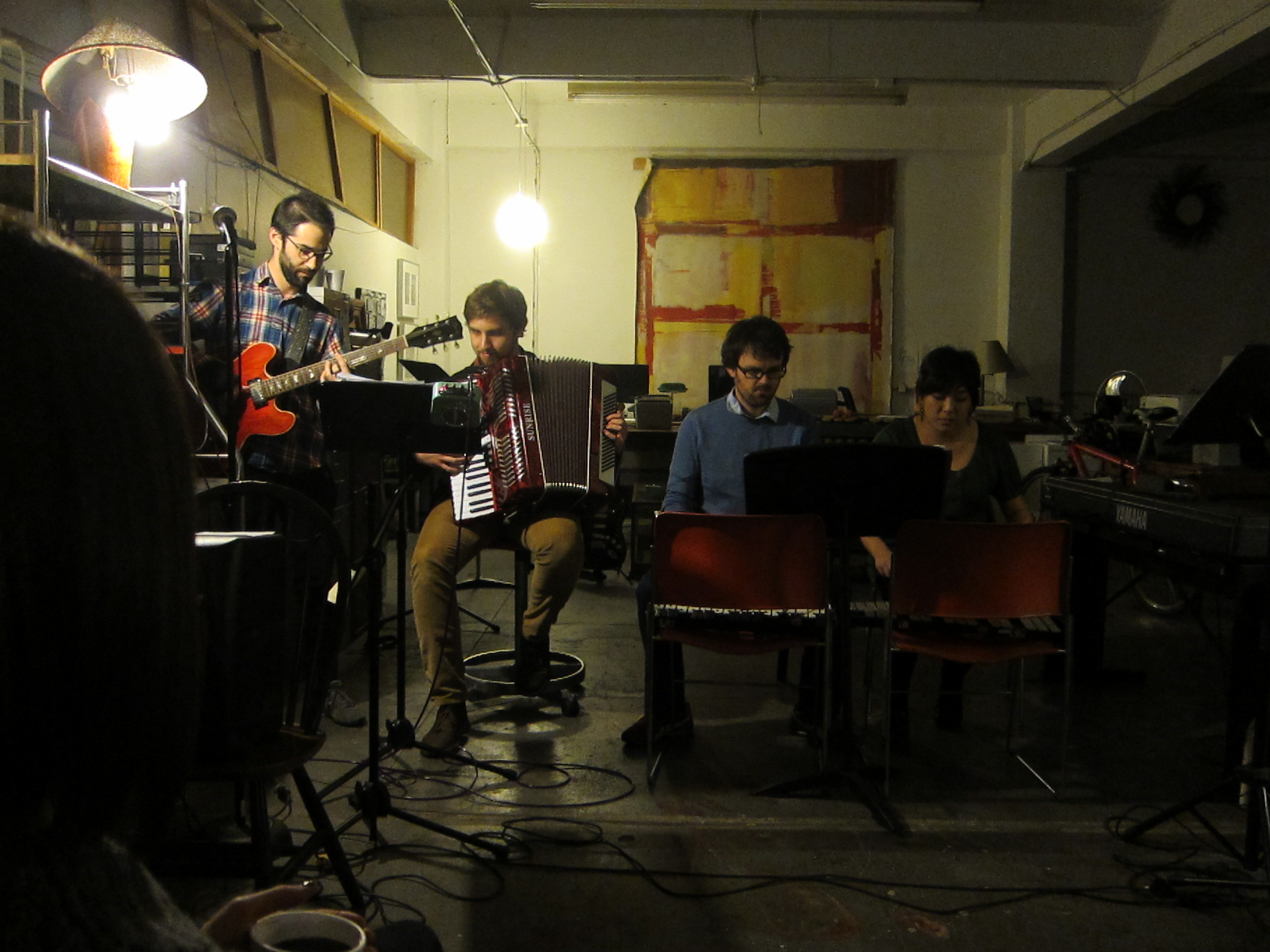
Sweat Lodge, photo by Lainie
brooklyn spaces: What are your thoughts on being an artist in Brooklyn these days?
Jascha: Well, when we started this space, Lainie and I were living in Chelsea, but most of our music friends lived in Brooklyn, and increasingly the concerts we were going to were in Brooklyn too. The center of gravity for our scene—and so many other artistic scenes—has been shifting here more and more. Brooklyn is incredible right now; there’s just so much creative activity here.

Exapno rooftop, photo by Maximus Comissar
***
Like this? Read about other coworking and skillshare spaces: Time’s Up, Pioneer Works, Bushwick Print Lab, Arch P&D, Urbanglass, 3rd Ward, Brooklyn Lyceum, No-Space
